bp_021412_004.pdf





04 Broadcaster Press
February 14, 2012 www.broadcasteronline.com
16th century harpsichord is
Koster’s favorite piece at
National Music Museum
By Travis Gulbrandson
travis.gulbrandson@plaintalk.net
When John Koster arrived
at the National Music
Museum to work as a
conservator in September
1991, then-museum director
André Larson told him, “The
glory days (of acquisition) are
over.”
“I think at that point there
were on the order of 5,100
items in the museum,” Koster
said. “It’s nearly tripled since
then.”
It’s one of Koster’s roles at
the museum to help oversee
the physical well-being of that
approximately 15,000-piece
collection.
Part of this involves
monitoring climate control
issues in the building and its
storage areas.
“In this climate,
particularly with the warm,
humid summers of the past
couple of years, it’s been kind
of a struggle,” he said. “It
requires constant monitoring
so that we can be in touch
with facilities management to
tweak when necessary.”
Storage and lighting
conditions also factor into this
“overseeing” aspect.
“Many things are very
delicate – all sorts of materials
that are not necessarily stable
under light,” Koster said.
He also works on
restoration projects at the
museum, which falls into two
main categories. The first of
these is to restore instruments
to playing condition.
“Of our 15,000
instruments, only a few –
and I mean maybe 30 – are
maintained in playing
condition. And that is
mainly the keyboard
instruments,” Koster said.
The other type of
restoration is more common.
“That is basically
consolidating or doing
cosmetic work on
instruments,” Koster said.
“They’re not always in
perfect condition when they
arrive, so we have to make
them exhibitable or
photographable if we’re going
to put them on exhibit.”
Students and interns are
often involved in both types of
restoration projects, he said.
Koster said his favorite
restoration may have been that
of a Neapolitan harpsichord,
circa 1530, that was unveiled
at the museum last September.
The instrument is noted
both for its playability and its
age.
“There may be somewhere
between 20 to 30 16th-century
harpsichords,” Koster said at
Spotlight
On
the unveiling. “Very few have
survived. This one almost
landed on a junk pile. The
former owner was cleaning
out his parents’ estate and put
it on the burn pile as a useless
toy piano.
“Somebody fortunately
said, ‘Don’t do that,’” Koster
said.
Not only his favorite
project, the harpsichord also is
his favorite piece in the
museum.
“If there were a fire or
tornado or something, I
would take that one,” he said
last week.
Harpsichords were what
brought Koster into
academics. Initially, he was a
harpsichord builder, making
copies of existing instruments,
which led to his working on
older instruments.
Eventually he worked to
restore them at the Museum
of Fine Arts in Boston and at
The Metropolitan Museum of
Art in New York.
“That grew into
scholarship,” Koster said.
“These instruments are
basically reviving something
that very little is known about,
so I had to look at old
instruments in various
collections and date them
and so on.”
This led to research,
which led to writing articles
– something to which Koster
refers as “the more scholarly
aspect” of what he does.
It is this research-related
aspect that he likes most of
all, he said.
“You can’t just go and tear
JOHN KOSTER
into instruments and rebuild
them,” he said. “For example,
with the Neapolitan
harpsichord, that whole
school of making was
completely unknown 20, 25
years ago. … It’s really about
making discoveries.”
Koster compared it to the
art world of the 19th century.
“People went around
assembling the oeuvre of
people like Botticelli and so
on, and attributing and deattributing paintings to
Leonardo da Vinci,” he said.
“With musical instruments, it’s
a scholarly discipline that’s
really relatively young.
“A lot of the basic work is
being done right now in terms
of categorization and figuring
out the historical relations
between things,” he said.
In addition to being a
conservator at the National
Music Museum, Koster is the
curator of keyboard
instruments, and a professor
of music and coordinator of
graduate studies in the history
of musical instruments at the
University of South Dakota.
For more information
about the National Music
Museum, visit
http://orgs.usd.edu/nmm/.
SESQUICENTENNIAL HIGHLIGHTS
By Cleo Erickson
Excerpts from the Plain Talk
1971
Mr. Myron Iverson has
donated his 1961 Cadillac
ambulance to the city and
county. Mr. Iverson
discontinued his ambulance
business on July 1. All
requests for ambulance
service should be made to the
Vermillion Police Dispatcher
at 624-4408.
A request was made to the
City Council to exclude
racing pigeons from the
ordinance regulating animals
within the city limits.
A total of 13 area artists
participated in the 1st annual
Sidewalk Art Show and Sale
sponsored by the Friends of
the Museum was held on the
USD Campus.
At the Council’s regular
meeting, an ordinance that
would have amended the
newly farm animal ordinance
was tabled. It would have
excluded racing homing
pigeons from regulation. The
Council is split on exactly
what to do with the pigeons.
One Alderman stated that
pigeons are a bigger problem
than horses. He went on to
say “Horses don’t land on
anybody’s roof.” Another
Alderman suggested that
“maybe make a pigeon leash
law.” The fate of the pigeon in
Vermillion is unknown.
At this week’s Council
meeting and after months of
discussion about pigeons the
Council amended the animal
ordinance that allows pigeons
within the city limits if they
are owned by members of the
National Pigeon Association,
the pigeons must be kept in a
closed loft, be banded and
exercise only on the owners
property. So, keep your
pigeons.
Frederick Manfred, well
known South Dakota author,
will be the guest speaker at
the Missouri River
O Foot Pain + Comfort
= LOVE
We have the insole & arch
support right for you!
Make life better everyday without foot pain!
Boston Shoes to Boots
312 W. 3rd • Yankton • 665-9092
Conference on October 7th.
His topic will be “The
Missouri River in its Natural
State.”
Dedication ceremonies for
the new Center of Continuing
Education at USD will be held
at the Center at 3:30 p.m. on
October 8, 1971.
At Monday night’s
meeting of the City Council,
Oden Implement Company
was awarded the bid for the
new ambulance. The model
of the new vehicle will be a
1972 International Harvester.
Vermillion and other
communities will need to find
solutions to their solid waste
disposal problems in the near
future. The public is invited
to a meeting regarding solid
waste disposal on Monday,
November 8th at the Center
for Continuing Education.
The Newberry Store was
the scene of an early morning
robbery. The Manager had
just completed a bank deposit
of $1155.00 and placed it in
the safe. He walked out of his
office and when he came back
the money was missing.
Employees working at the
lunch counter saw a man
wearing a black trench coat
and black hat walk into the
store. Both employees said he
was sharp looking as he
walked to the back of the
store. Chief Offerdahl said
this was possibly the man and
he seemed to know where he
was going without hesitation.
The investigation is
continuing.
Shoppers!!! Don’t forget
to sign up for a free turkey to
be given away by
participating Chamber
members. The names will be
collected at the close of
business on Saturday and 30
names will be drawn for
M&M Excavating
We Move the Earth!
Tree
Removal,
Dirtwork,
etc.
Competitive Rates
Home: 402-256-9312 • Cell: 402-278-1476
turkeys. There are a total of
100 turkeys to be given away.
Shoppers need not be present
to win and may register as
often as possible.
Ground breaking
ceremonies for the new
$3,050,000 Fine Arts Center
will be held at 2:00 p.m.,
November 12, 1971. Guests
include the South Dakota
Legislature and the Board of
Regents. The College of Fine
Arts is currently housed in
eight different buildings.
A “Holiday Historic
House Tour,” has been set for
December 12th from 4:00 to
7:00 p.m. This is the first Tour
of Homes sponsored by the
Clay County Historical
Society.
END 1971
CHILDREN AND
YOUNG ADULTS
NEEDED
For Hearing/Auditory
Processing Study
The USD Department of Communication Sciences and
Disorders is seeking children ages 7-13 years and adults 18-25
years with no history of language, learning, or hearing problems
to participate in a research study focused on updating normative
values for diagnostic tests of Central Auditory Processing.
Participation will require two test sessions at the USD SpeechLanguage-Hearing Clinic in Vermillion. Each session will take
approximately 1.5 to 2 hours and can be scheduled at your
convenience (including evenings and weekends).
All participants will receive a free hearing test and central
auditory processing evaluation. Participants also will be
compensated for their participation.
To participate you must:
• Have no history of language, learning, or hearing problems.
• Have normal hearing
• Speak English as your primary language
• Be between 7-13 or 18-25 years of age
For more information, contact:
WANTED
Buying all types of SCRAP IRON
Farm Machinery • Cars & Trucks
References Available • Top Market Prices Paid
Home: 402-945-1512 • Cell: 402-533-3640
K&K Iron & Metal
Jennie Bellis
Department of Communication
Sciences and Disorders
The University of South Dakota
(605) 202-1345 • jdbellis@usd.edu
Allison Root
Department of Communication
Sciences and Disorders
The University of South Dakota
(775) 313-4449 • Allison.Root@usd.edu
Teri James Bellis, Ph.D., CCC-A, FAAA, F-ASHA
Department of Communication
Sciences and Disorders
The University of South Dakota
(605) 677-5474 • tbellis@usd.edu
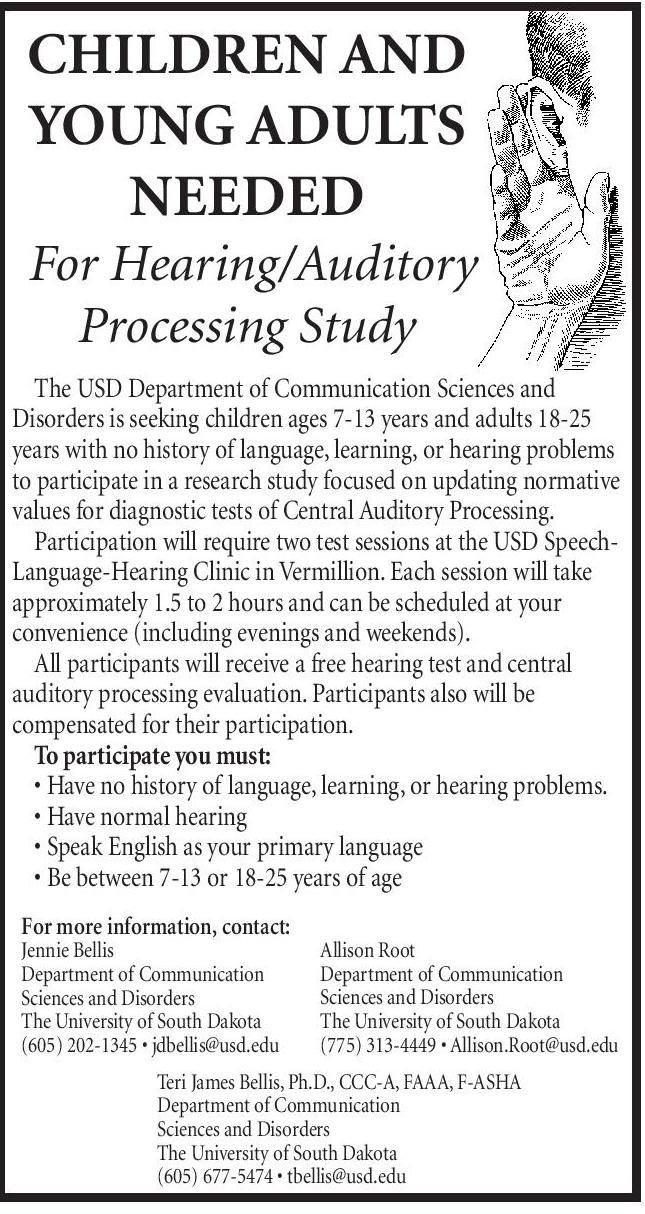






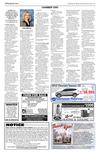





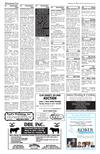

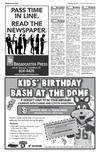
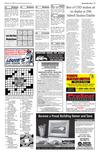

 Previous Page
Previous Page






